Free download NCERT Solutions for Class 10 Maths Chapter 5 Exercise 5.4 AP (Arithmetic Progression) in English Medium and Hindi Medium form. CBSE books Solutions for class 10 all subjects are given in PDF file format. Solutions of Exercise 5.1 or Exercise 5.2 or Exercise 5.3 are also in PDF form or use it online without downloading. All solutions are done properly by the experts but still any problem with solutions, please inform us we will do the needful.
NCERT Solutions for Class 10 Maths Chapter 5 Exercise 5.4
If you need solutions in Hindi, Click for Hindi Medium solutions of 10 Maths Exercise 5.4
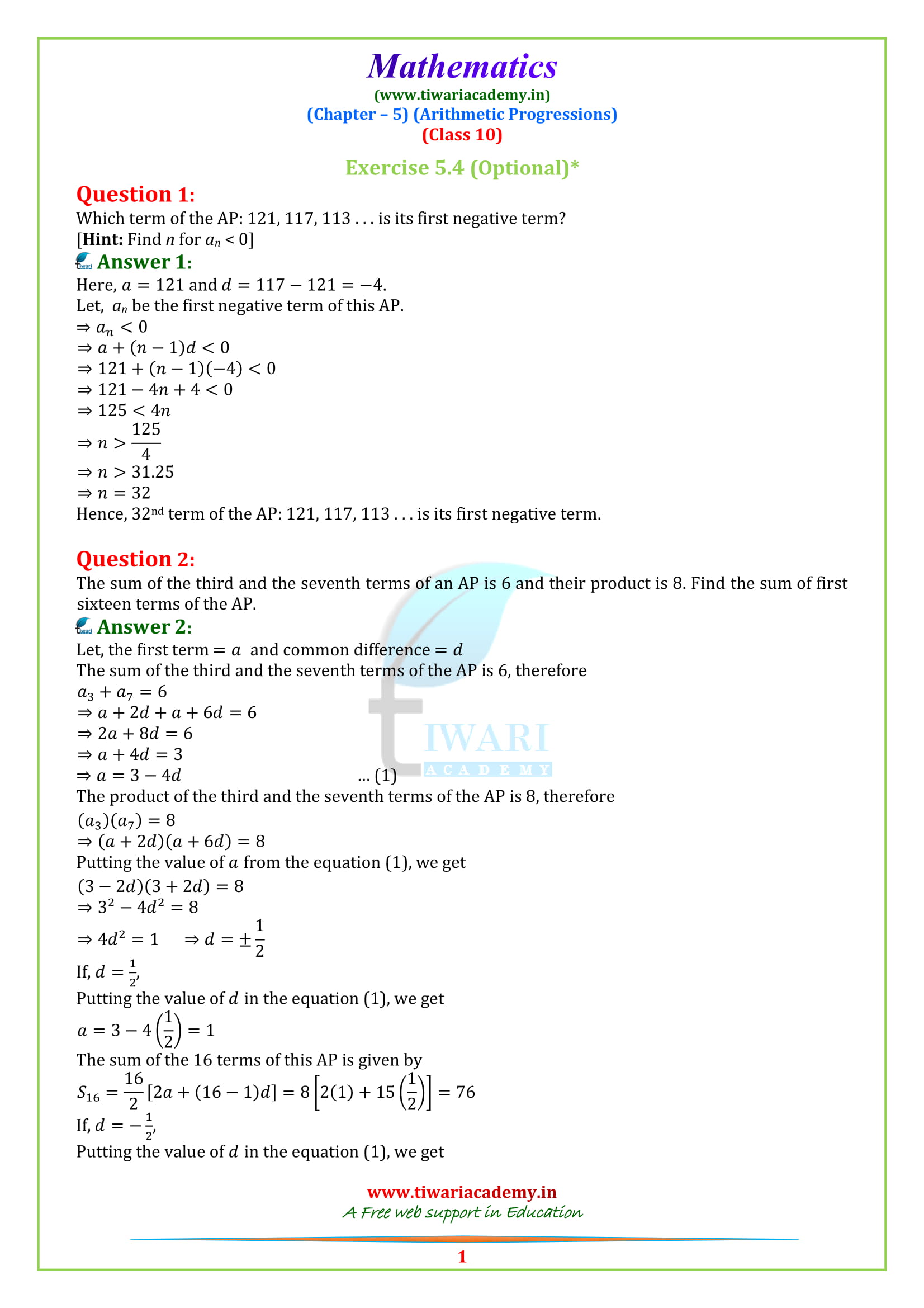
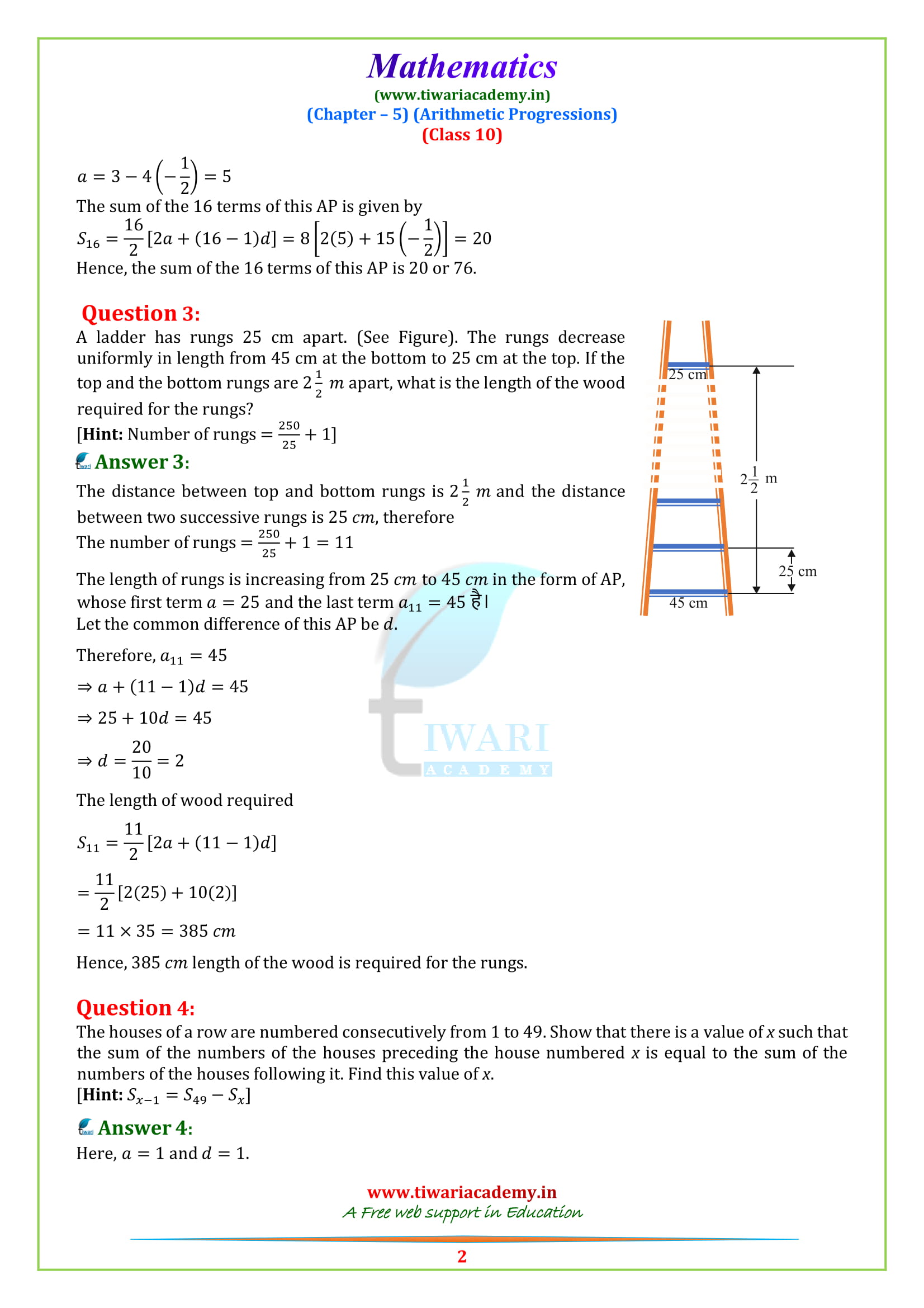
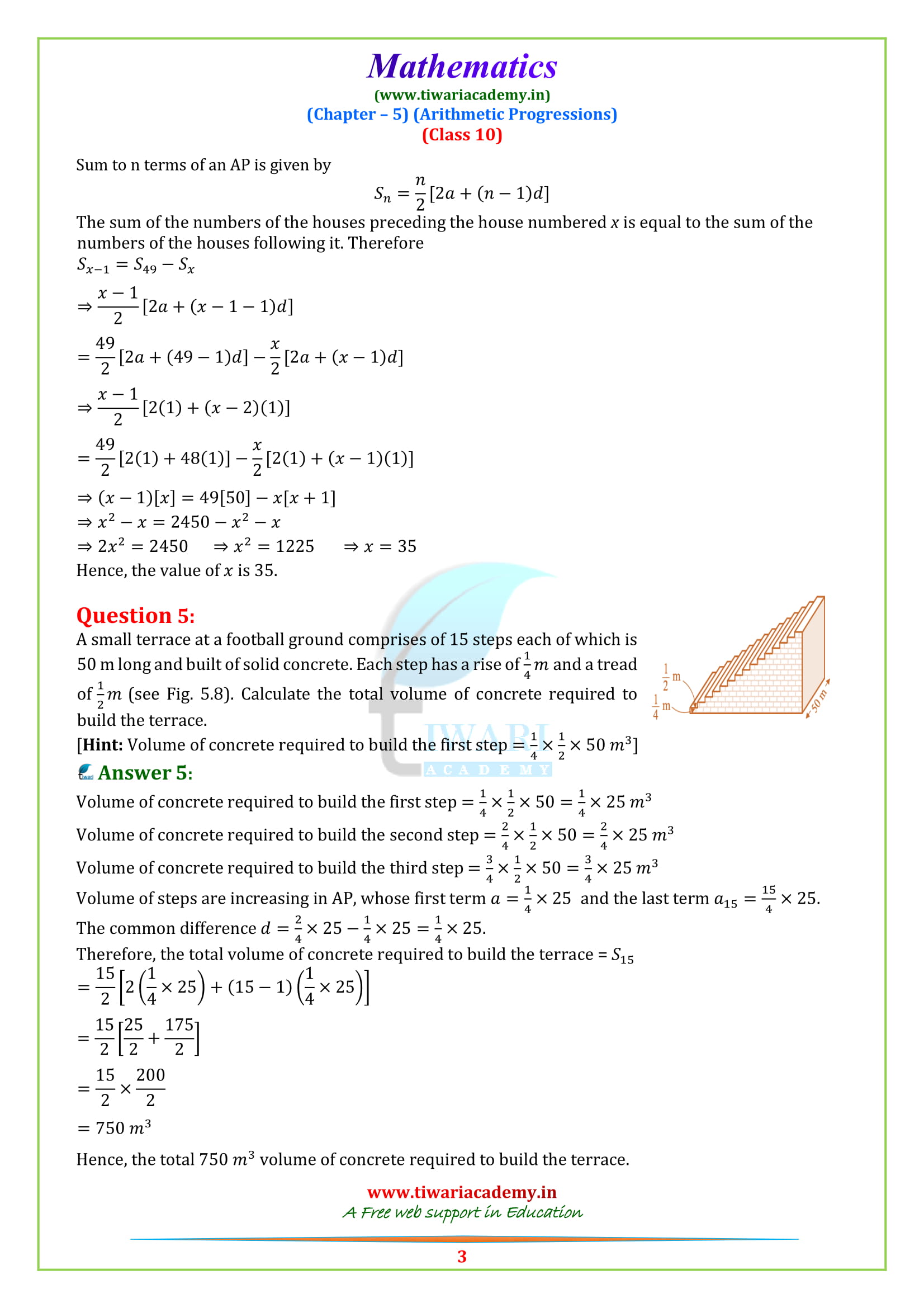
Class 10 Maths Exercise 5.4 Sols in Hindi Medium
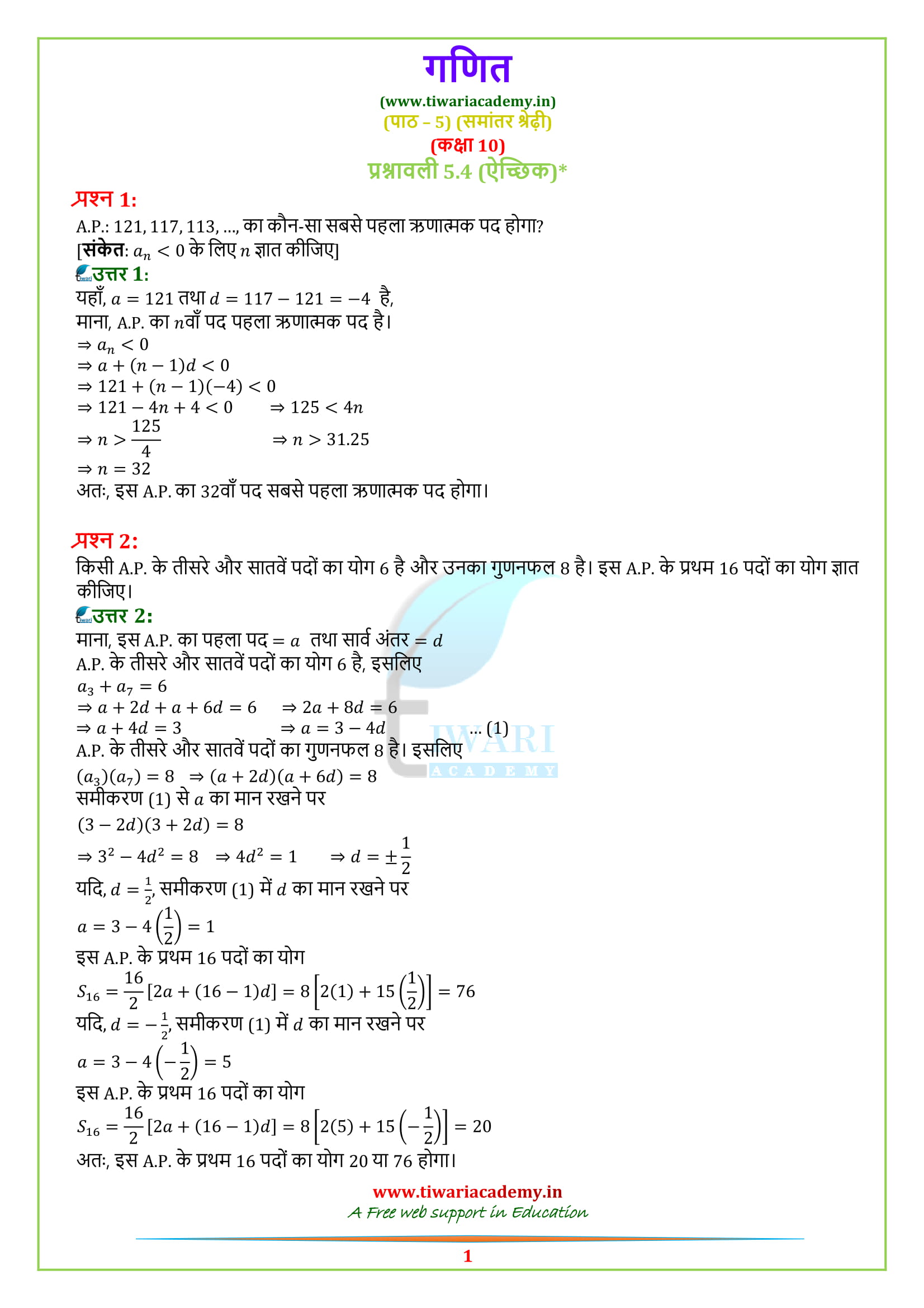
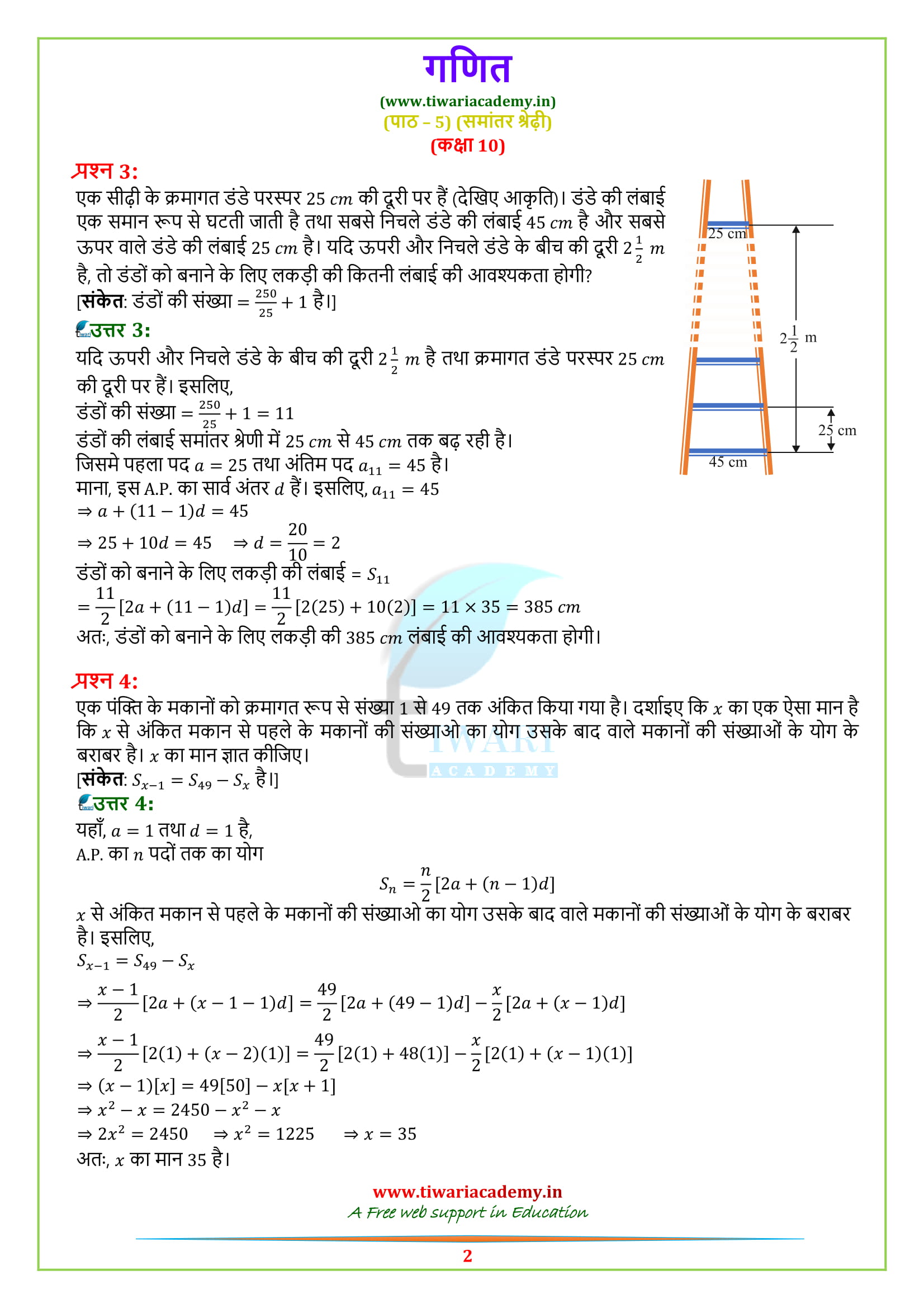
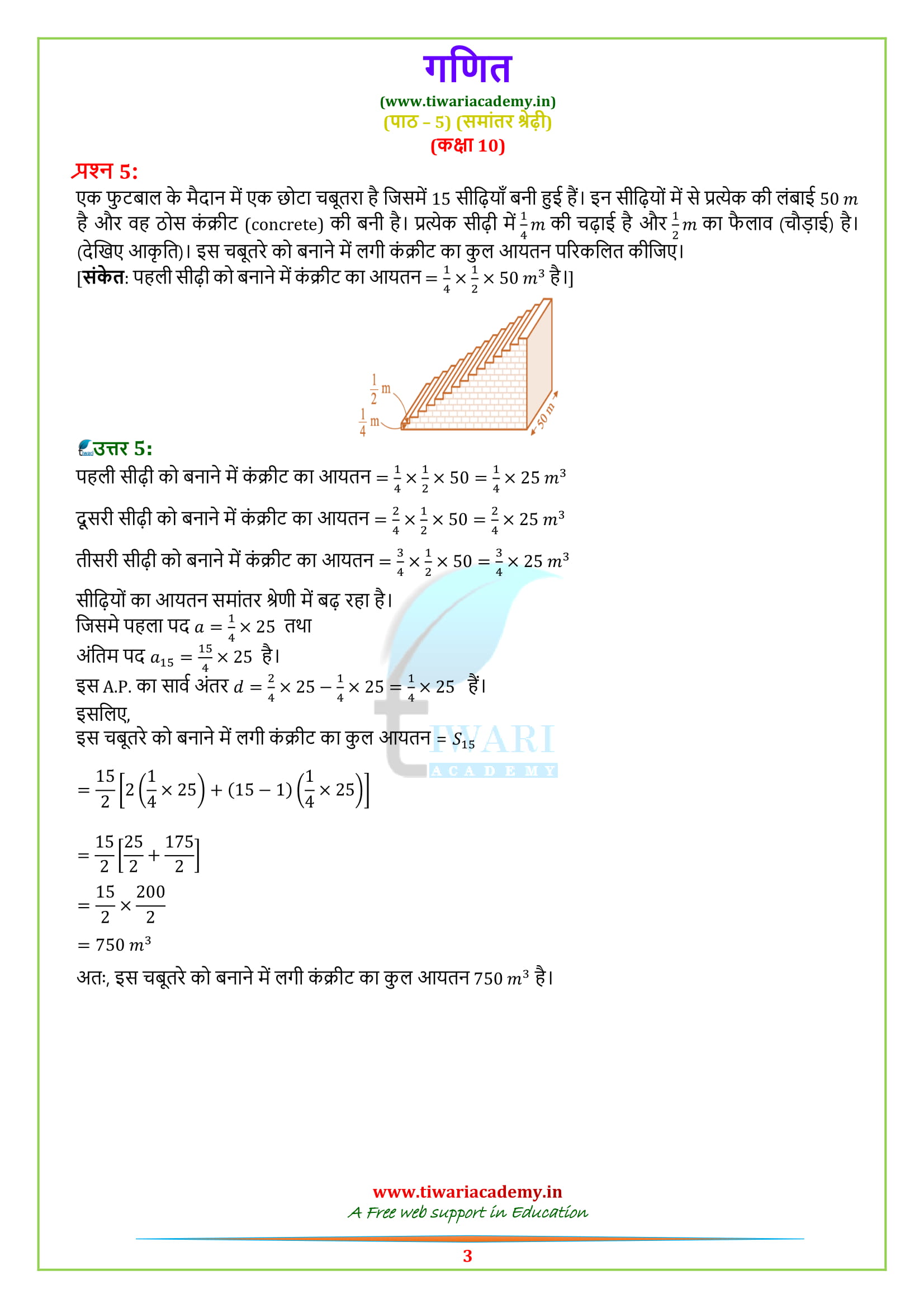
To get the solutions in English, Click for English Medium solutions.
Important Questions for practice on Arithmetic Progression
- A man purchased LCD TV for ₹ 32500. He paid ₹ 200 initially and increasing the payment by ₹ 150 every month. How many months did he take to make the complete payment?
- Divya deposited ₹ 1000 at compound interest at the rate of 10% per annum. The amounts at the end of first year, second year, third year, …, form an AP. Justify your answer.
- Two APs have the same common difference. The first term of one AP is 2 and that of the other is 7. The difference between their 10th terms is the same as the difference between their 21st terms, which is the same as the difference between any two corresponding terms. Why?
- The taxi fare after each km, when the fare is ₹ 15 for the first km and ₹ 8 for each additional km, does not form an AP as the total fare (in ₹) after each km is 15, 8, 8, 8, … Is the statement true? Give reasons.
- The sum of the first three terms of an AP is 33. If the product of the first and the third term exceeds the second term by 29, find the AP. [Answer: 2, 11, 20, …]
- If the 9th term of an AP is zero, prove that its 29th term is twice its 19th term.
- Which term of the AP: 53, 48, 43,… is the first negative term?
- How many numbers lie between 10 and 300, which when divided by 4 leave a remainder 3?
- The sum of the first five terms of an AP and the sum of the first seven terms of the same AP is 167. If the sum of the first ten terms of this AP is 235, find the sum of its first twenty terms.
- The sum of the first n terms of an AP whose first term is 8 and the common difference is 20 is equal to the sum of first 2n terms of another AP whose first term is – 30 and the common difference is 8. Find n.
- Yasmeen saves ₹ 32 during the first month, ₹ 36 in the second month and ₹ 40 in the third month. If she continues to save in this manner, in how many months will she save ₹ 2000?
- Jaspal Singh repays his total loan of ₹ 118000 by paying every month starting with the first instalment of ₹ 1000. If he increases the instalment by ₹ 100 every month, what amount will be paid by him in the 30th instalment? What amount of loan does he still have to pay after the 30th instalment?

